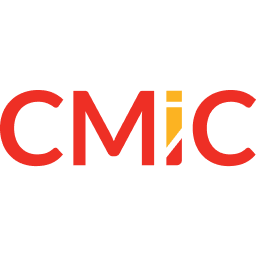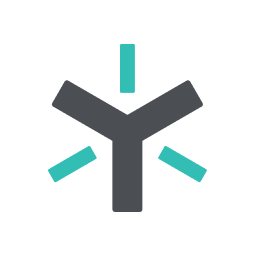
Candidates often look at our background and ask, “Why construction?”.
Unlike many vertical startups that sell you a sentimental origin story, we don’t have one. We have no memories of dad taking morning drives to the field office in his pickup, or nostalgic recollections of laying rebar on the jobsite.
Instead, our decision to focus on construction was pragmatic - we saw an opportunity to enter a massive, underappreciated industry ripe for innovation, that modern software has only started to address.
How did we get here?
Our co-founding team met in 2014 at Graphiq, a data-analytics startup helping people make better decisions. We were obsessed with unleashing the potential of Graphiq’s platform on businesses, and convinced a local construction tech startup - Procore - to be a design partner. We worked with them for months, helping one of their largest customers (a major east coast GC) generate data insights using our tool.
We learned a ton about construction, but our project was cut short when Amazon acquired Graphiq. Four years later, we caught the bug to leave Amazon and start our own thing. We weren’t sure what to build, but concluded that applying to Y Combinator was the best way to force ourselves to figure it out.
Picking construction
Propelled by Amazon’s “Customer Obsession” and YC’s “Do Things That Don’t Scale”, John and I spent the first weeks of our YC batch maniacally contacting anyone who would talk to us. We targeted the two industries we had experience in: finance (from our time on Wall Street) and construction (from our work at Graphiq with Procore).
We struck out in finance. Despite having domain knowledge and connections, no one would speak to us unless we signed multiple NDAs. Every firm insisted their tech needed to be built in-house to maintain their “proprietary alpha”. After dozens of calls, we identified no real problems and had no promising leads.
Construction was the opposite. John and I messaged every user who had posted in a construction-related forum - Procore, Autodesk, Sage, QuickBooks, CFMA, and others. We sent hundreds of messages over several weeks, offering to take calls at any hour to solve their software-related problems, however minor.
To our surprise, construction professionals were actually willing to talk to us! In fact, many called us directly from their site trailers or during lunch breaks.
They spoke openly and with passion about real problems - like too many systems that didn’t talk to each other, excessive manual data entry, and inefficiencies that kept them from focusing on the valuable parts of their jobs. We learned first-hand that much of the industry still relies on pen and paper, email, fax and on-premise software for important workflows.
We felt well-suited to tackle these challenges. Their openness, passion, and no-BS attitude made us want to build for them. After hundreds of these calls, we made our decision: construction it is.
Zooming out
Those initial calls gave us the fuel to ship our first product, secure our initial customers, and generate recurring revenue. But we were setting out on a 10+ year mission, and wanted more fundamental reasons to underpin our pursuit.
We couldn’t fully articulate it at the time, but we had an intuition that construction was a great industry for building software. It is large, critical, and global. It wasn’t over-saturated with software solutions. Its customers are fragmented and mostly mid-sized, making the market hard to win quickly. Our work with Procore made us feel like we had uncovered a secret that most of our tech industry peers overlooked.
With hindsight, we can explain our early thinking more clearly.
Construction is critical and durable. Construction is a massive market that fulfills a critical societal need. Every home, road, school, and hospital depends on it. And as global population grows, so does the demand for new construction and post-construction services. In 2023, $13T worth of gross annual output was devoted to construction projects globally (7 percent of global gross output). In 2020, the construction industry employed roughly 8 percent of the global workforce. It is also unlikely to be disrupted by LLMs.
It’s a massive, growing market - but overlooked. The total addressable market is enormous, both domestically and globally. SaaS leaders (Procore, ServiceTitan) estimate their TAMs to be between $10B-$100B. But unlike other large markets (e.g. fintech, dev tools), construction isn’t considered “sexy”. Few software developers realize the immense opportunity in building tools for contractors, and the tangible impact they can have by solving the industry’s complex problems.
Recent changes create a window of opportunity. While construction is among the least digitized industries in the world, big trends are creating the need for companies to change long-standing habits. Depreciating infrastructure, an aging workforce, generational transition of company ownership, shifts from on-prem to cloud software, and younger people moving away from trades will force companies to increase efficiency. In the US alone, the average number of vacancies in construction doubled between 2017 and 2023 (from 200,000 to 380,000). This creates a catalyst for change that helps newer entrants like us win against encumbants.
What sustains us
While the above factors explain part of the picture, they don’t fully capture what appeals to us personally. Here’s what keeps us motivated, engaged, and excited day to day.
Construction impacts the real word. Its output - homes, roads, and schools - is visible, physical, and persists over time. We can see our customers work very clearly - biotech labs in SF, the Gigafactory in Texas, and data centers all across the country. We like that we contribute directly to making this type of work more efficient and profitable. Our prior work felt abstract and overly focused on intellectual stimulation rather than solving real problems. When starting our own company, we wanted to avoid this by focusing on specific customers with tangible output. Walking through an under-construction airport terminal and seeing our customers’ logos on the wall is a powerful reminder of their impact.
Our customers are real people running serious businesses. Most of our customers have been in business for 50+ years. Some are multi-generational companies with 100+ years of history. They work long hours outdoors, often in places far from tech hubs like San Francisco and New York. They are justifiably skeptical of new software, direct in their feedback, and quick to indicate whether we are solving an actual problem. Compared to building developer tools or the latest AI sales-automation tool, serving construction customers feels more meaningful to us.
Construction is insanely nuanced. We enjoy navigating complex domains with layers of nuance, and construction offers this in spades. Each project is a unique, multi-party effort spanning months or years, influenced by factors like weather, commodity prices, labor availability, and supply chains. Projects range from multi-million-dollar homes to mixed-use high rises, hospitals, stadiums, and highways. A given contractor may handle hundreds of distinct jobs per year, with slim margins that make financial tracking critical. The software, business logic, and data models are highly specific to the domain. As outsiders, we are constantly challenged to learn and update our knowledge, which we do by staying very close to our customers.
The road ahead
We chose construction because we saw an opportunity to create a venture-scale scale outcome while driving lasting impact in the real world. Every day, we’re inspired by the customers we serve and the tangible results of their work. This is why we build for construction, and why we’ll continue to do so for years to come.
References
- https://www.agaveapi.com/blog/press/announcing-our-seed-round
- https://www.mckinsey.com/capabilities/operations/our-insights/delivering-on-construction-productivity-is-no-longer-optional
- https://www.meritechcapital.com/blog/procore-ipo-s-1-breakdown
- https://www.meritechcapital.com/blog/servicetitan-s-1-breakdown


















